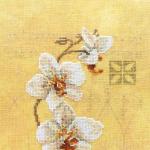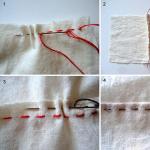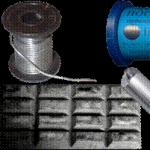beautiful elements in modern design living space able to provide comfort and harmony in your home. To date, french curtains in the interior are considered a fairly popular design option for window space. Thanks to them, a warm and mysterious atmosphere appears in the room. They are often used in country estates and spacious apartments.
You can create such a model yourself at home. Our material presents detailed instructions how to sew french curtains effortlessly. All the subtleties of the workflow are noted here.

The advice of experienced professionals will help you make the correct calculation of the material and the frequency of weightless waves.

How to choose material for curtains?









Curtain fabrics may contain a small amount of lurex. beautiful glitter under sunbeams will add a piece of luxury to the interior space.

Marquise curtains are often used in classic design. They will become a real decoration of your home. There are several criteria when choosing a fabric for sewing curtains:
- soft texture. It allows you to create a large number of air folds on the surface of the material. Thicker fabrics are intended for big waves which are used to create lambrequins;
- heavy materials (jacquard, natural linen) will help to make large folds;
- French curtain in the kitchen, must be made of synthetic fabric. Pretty designers prefer to use organza or tight tulle. These materials lend themselves well to cleaning;
- do not choose fabrics with a small pattern in the form of flowers or geometric shapes. During drapery, the decorative elements of the material will be lost against the background of the window space. As a result of this, a tasteless detail may appear in the interior, which will constantly distract.

Ready-made Roman blinds can be supplemented with a beautiful lambrequin. A luxurious duet of dense and airy material creates a truly sophisticated design.

Basic rules for combining fabrics
Marquise curtains require a competent combination of fabrics and materials. You can create beautiful smooth waves using several types of fabric. The veil is in perfect harmony with thin organza. It also looks good in a duet with dense satin or natural linen.

Add decorative elements you can use voluminous tiebacks or beautiful beads enclosed in a long shiny cord. During drapery, the crystal bugle will gently descend along the edges of the air waves.










How to calculate the amount of fabric to create curtains?
There is a certain technique that provides for all the subtleties of the workflow. As noted above, the first step is to correctly calculate the distance between the waves.

To do this, multiply the length by 2 and add the required distance for allowances. Basically it is 4-6 cm from each edge. An allowance of 5 cm is made at the bottom. As you can see, everything is quite simple.

For sewing a small curtain, you will need 3-4 m of an air veil. Size finished curtains will be 2 m. These parameters are enough to decorate a small window opening.









Patterns for Roman blinds
At the beginning of the workflow, it is recommended to define the model. There are several types of curtains, which differ in the number of folds on the surface of the fabric. Modern options provide for the presence of a secret drawstring, which will regulate the assembly of the material.

The pattern is a large rectangle with additional marks for a hidden lace. The distance between them is calculated based on your preferences.

It is worth noting that the closely spaced drapery creates lush curtain patterns that are suitable for a living room or bedroom.

Stages of creating curtains
Algorithm self-creation French curtains consists of several stages:

- processing of cuts and edges of fabric. For this, the material is placed on flat surface preventing the appearance of unnecessary wrinkles;
- a bend is made in the lower part and fixed with a needle and thread. On average, it is 5 cm above and below;
- further mark the position of the hidden wings. They will continue to provide the necessary air waves;
- after that, a lace is pulled into the drawstring, which will be in the role of a canvas retainer;
- the final step will be to attach an additional tape with places for attaching hooks. They help to evenly attach the curtains to the eaves.

Such lightweight curtain designs will be a real decoration for a bedroom, kitchen, living room or even a balcony. They are able to fill the interior with an atmosphere of lightness and romance. Even in ancient times, they were used to decorate luxurious castles and estates.









Today they are used in baroque, rococo or classic style. They will never go out of fashion. The photo of French curtains captures the best options for decorating window space.

Photo of French curtains











IN Lately French curtains are most often seen in kitchens, although they are also chosen for halls and halls. It is worth dwelling in more detail on how the models from France differ from all the others.

Features, advantages and disadvantages
Many people wonder what it is - French curtains. It’s not for nothing that they immediately come to mind luxurious decorations Renaissance palaces. Indeed, French curtains look pompous and solemn. The French curtain is a canvas gathered in folds, due to which beautiful draperies are formed. Depending on the model, such curtains can either be pulled up or left in a static position. Difficulties are the care of such curtains. They are difficult to clean, as dust collects in the folds and eats into the fabric. And also the disadvantage is the huge consumption of fabric, due to which similar model is heavier than analogues, for example, Roman blinds.

Varieties
There are a huge number of varieties of French curtains. They are subdivided according to length, type of braid, fabric density. However, the most important division is according to the way the curtains are attached. They are divided into two varieties.
- Stationary. This refers to a model that cannot be folded or raised by pulling the braid. Such curtains are more suitable for rooms in which natural light is not welcome. And also this option is good for kitchens on the first floors, as it reliably protects the room from prying eyes. Blind curtains can be various lengths, but most often either models are selected to the floor, or to the middle of the window. In the second case, an optimal ratio is achieved between the amount of light transmitted and the privacy of the situation. For the kitchen, the second option is usually used, sewn from tulle or other light fabric.

- Folding. The awning curtain is often equipped with a mechanism that allows you to pull it up at your discretion. It's all about frame system, so it is almost impossible to make folding French curtains on your own. Better buy now ready-made version. If the French curtain is made of thick curtain fabric, then it is advisable to equip it with an automatic lifting mechanism. This will greatly simplify operation.

When choosing which curtain to hang - deaf or folding, you should focus on the practicality of the chosen option. If you need to open the window from time to time, it is advisable to hang a folding curtain. If it is not necessary to open the window at all, then the stationary option is more rational.
Fabrics and colors
If earlier french curtains sewn only from expensive elite fabrics, today the choice is huge. Curtains are made from both natural and artificial materials, they can be both light and dense. They also differ in price. Technologies are such that even not the most expensive fabric can perfectly repel dust and at the same time look attractive. Depending on the room, both translucent flying materials and dense fabrics for curtains can be used. The main condition is sufficient elasticity of the fabric, otherwise it will not work to create characteristic scallops. By the way, you should not take models for French curtains that have folds only at the bottom. The name of such curtains is Austrian curtains.

To date, the following materials are most often used:
- tulle;
- organza;
- silk;
- batiste;
- wool;
- taffeta;
- velvet.

As for color, traditionally French curtains are made in pastel colors: white, ivory, beige. This statement is also true for thick curtains, and for tulle models. Interesting solution- bright French curtains. Burgundy and emerald colors are perfect for heavy curtains. Solar yellow choose for kitchens. Blue or pink can be used both in the kitchen and in the nursery, provided that the curtains are made of flying materials.

Color combination may vary. Often, French curtains are complemented by lambrequins, which can be made from the same fabric as the main canvas, but in a different color scheme. For example, the following combinations are common:
- white + beige;
- yellow + gold;
- white + blue.



We select the style of the rooms
French curtains can be successfully fitted into almost any interior, including such devoid of sophistication options as country or rustic. Much depends on the length of the curtains, their type, as well as on the design features. For example, it is much more appropriate to choose blank curtains for a kitchen with a country interior. middle length made of flashy chintz rather than heavy velvet floor-length drapes. First you need to decide for which room French curtains are selected. Options for the kitchen and for the bedroom will vary. If for the kitchen, first of all, you need to pay attention to the functionality of the material, then in the bedroom you can pick up curtains of their more branded, but pleasant to the touch fabric. It is also important to pay attention to whether the material is hypoallergenic, especially when buying French curtains for a nursery.




Currently, French curtains are most often chosen specifically for the kitchen, so it makes sense to consider in detail the three most popular directions in which these rooms are furnished. So, you can often see modern dining areas furnished in classical style or in the countryside. All three options are universal, that is, they are suitable for decoration large kitchens as well as for the little ones. Curtains are selected depending on financial capabilities.

Modern
It would seem that buying French curtains for modern interior not entirely appropriate, but in reality it turns out not to be so. Depending on the fabric and the length of the curtains themselves, they may look less elaborate and sophisticated than usual. A good option are natural fabrics such as linen. Linen curtains do not get dirty, but the fabric drapes well. A wide range of colors and patterns will allow you to choose suitable model for each specific interior. The only downside is the price. Linen is an expensive fabric, especially with all sorts of additives that make it easier to care for.




And also in modern interiors you can often see tulle curtains just below the window sill or up to the middle of the window. There are some advantages to choosing this option. For example, you can not worry that the room will be too dark. Tulle transmits light well, while protecting the room from prying eyes. True, complete privacy cannot be achieved with the help of such curtains.

In any case, for a modern interior it is worth choosing the most simple options without a large number decor. For example, you do not need to look for curtains with lambrequins. One braid along the edge will be enough, although most often you can do without it. And also the fabric should be with a simple elegant decor, without cheap shine and overflow.
Classical
Curtains are most harmonious in french style look exactly in classic interiors. This also includes a more elaborate baroque style, which differs from the classics by the presence of a huge amount of gilding, intricate details in the decoration and similar excesses. Accordingly, French curtains must fully meet the requirements of the style.
- You need to pay attention to the fabric. Most commonly used combined curtains. On the one hand, French curtains can be made from tulle, and thick ordinary curtains can be hung on top. On the other hand, French curtains from thick fabric, for example, brocade or velvet will also look appropriate, especially if there is additional decor: fringes, trimmings and the like.
- Colors can be any, but monochromatic deep colors are most often chosen: green, burgundy, blue. In a more modest setting will look good gray curtains with silver jacquard pattern.
- Be sure to have lambrequins and other additional elements. Only with sufficient pomposity will French curtains look truly elegant and solemn.




Important! This option is not suitable for the kitchen. If the kitchen area is decorated in a classic style, it is better to choose a different type of curtains.
Country
It would seem that there is nothing more strange than French curtains in rustic room. In reality, things are a little different. Such curtains, made of light bright fabric with a pattern, look quite appropriate and even emphasize the deliberate simplicity of the interior. The main thing is to choose the right length, colors and material. First of all, it is worth mentioning that the French curtain in the country room should not fall below the middle of the window, because it is the ajar window that will make the curtains less formal. If the window faces the sunny side and you want to lower the curtains from time to time, then you should choose a folding option. So, if necessary, you can cover the curtains, and after the sun disappears, return the room to its original appearance.


Almost any materials will do, but it is important that they are not luxurious. Chintz fits well. But you should not make French curtains from tulle, except to choose a mesh version with embroidery. Any fabric should look like it was handmade, so the patchwork style is welcome. As for the colors, they look good. bright colors and combinations. Checkered curtains are a classic of the genre, especially when it comes to kitchen window. And also curtains with print a la appliqué and painted for patchwork will look good.
Luxurious, chic, rich, stylish, palatial, solemn, charming - these are all the epithets that characterize French curtains (awnings). The interior, which is crowned with them, becomes truly royal. Smooth lines, soft arched draperies combined with light texture of fabrics and various finishes few people will be left indifferent. Unlike more practical models of curtains and curtains, such as Roman or roller blinds, the French in the first place is beauty, and only then - functionality.
They look especially impressive in the frame of the classical style, or Provence style. Sewing an awning for your living room, bedroom or kitchen on your own is a laborious task. But if you are patient and friendly with sewing machine- you can sew French curtains. You just need to remember that such a model of blinds requires strict observance of proportions in the interior, otherwise it will look heavy, weighting in it, which is not far from dissonance.
In general, the awning is a cascade-lifting model. This is its similarity with the Roman and Austrian curtains: all these are varieties of blinds. But the first draperies do not exist at all (only horizontal folds), the second drapery of the lower part is formed when the product is lifted up, and when lowered they look even.
The marquise, on the other hand, consists entirely of festoons (sagging assemblies) in the lowered state. As they rise, they become deeper and more expressive.
Marquise curtains for formal interiors
French curtains in the interior of the room can only cover the window opening (for example, tulle in the Provence style kitchen), often combined with curtains or lambrequins, or they can play the first violin, occupying the entire width of the wall. Here, the presence of upper curtains depends on the overall stylistic design space and the need to create complete blackout (if it is a bedroom or home theater).
Special cut - special textiles
To begin with, let's make a reservation that the marquis blinds are far from the most economical option window decoration: it will take several times more fabric to sew French curtains than to regular curtains, besides, expensive ones are preferred here, quality materials, rich (respectively - also not cheap) finish. Therefore, before sewing such curtains, you need to make sure that they are ideal for a particular situation, and the cost of them will be justified by the beauty of the product, and harmony with the surrounding space.
 French curtain in the kitchen - one wonders why?
French curtain in the kitchen - one wonders why? In order for the gathers to be even and beautiful, the fabric chosen for these blinds must be well draped. Light, soft textiles are suitable: tulle, thin satin, silk, veil, chiffon, moire, organza. But if you sew French curtains from hard, dense, heavy fabrics with a pronounced rough texture, they can distort your entire interior in the Provence style beyond recognition, because they will have a completely different look when assembled.
 Marquise organza curtains, interesting drawing vertical stripes assembled
Marquise organza curtains, interesting drawing vertical stripes assembled How to sew a marquise
In principle, sewing it is quite simple: the side and bottom seams, in a straight line, the upper braid is sewn, the curtain tape in the center of each scallop. much more difficult and more painstaking work for accurate gathering of the fabric and installation of the lifting device.
Let's figure it out in order.
How much fabric to take, so as not to be mistaken
The calculation of the required width depends on the desired depth of the scallops: the more the width of the material exceeds the length of the cornice, the deeper the drapery cascades will fall. On average, this value is 1.5. That is, for a window with a cornice length of 2 m, you need to take a tulle 3 m wide.
The calculation of the cut length for French curtains is made based on the thickness of the selected materials and the desired assembly depth. For example, for a deep assembly of organza, the estimated length of the curtain must be multiplied by 3, for tulle - by 2, for a veil - by 2.5. For easier assembly, these numbers can be reduced. For example, let's take a height of 2.5 m. To sew an awning with beautiful assembly, tulle need to take 5m in length.
Calculation of the number of scallops: what to consider
When calculating the number of draperies, you need to proceed from the size of the window and the selected fabric. For narrow and high ones (for example, in a Provence-style kitchen), it is better to choose a small step - 25-35 cm, for wide ones - up to 50-60 cm and even more. The thinner and lighter the material from which these draped blinds will be sewn, the smaller the scallops can have a French blind.
The required web width is another factor affecting the number of scallops. Do not forget that the width of the awning before assembly is several meters. And here you can not do without stitching several canvases together. Therefore, it is necessary that each such seam hit the middle of the festoon, where the curtain (gathering) tape will be located. At the same time, allowances for seam processing must be left on the sides.
Tailoring technology
Lay out the future French curtains on a flat surface, but for now just pieces of tulle stitched together until the desired width is obtained. Mark the center lines of the scallops with chalk or pins, leaving allowances for processing: from the sides and bottom of the curtains - 5 cm each, from above - 2 cm.
Fold over and stitch the side seams twice. Baste the gathering tape along the markings with a needle or pins. At the same time, it should not reach the bottom cut of the material by 5 cm, to the top - by 2 cm. Attach each tape from both edges.
If the top edge of your blinds is also gathered, it is enough to fold it in 2 cm and attach a fastening tape that will adjust the width of the assembly. If you want your French blinds to have a smooth top, first divide the difference between the width of the tulle and the length of the curtain rod by the number of scallops. Either sew the resulting value into a tuck (30-50 cm deep) in the center of each scallop, or lay it with a bow fold and sew horizontally. After that, attach the fastening tape. Now fold and stitch the bottom of your blinds twice.
If you were going to sew them on the window in romantic cuisine with a touch of Provence, where it is not supposed to raise and lower the curtains, then everything is almost ready. It remains only to pull the curtain tape to the desired size, fasten it with knots, straighten the assembly and hang the awning on the eaves. You can decorate the kitchen.
 Curtains french marquise in the interior of a small kitchen can look heavy, be careful in experiments
Curtains french marquise in the interior of a small kitchen can look heavy, be careful in experiments When is a lifting mechanism needed?
If the romanticism of Provence fanned your bedroom or living room, we have not finished sewing French curtains for them yet. In these rooms, the scalloped curtain must be lifted, therefore, before pulling it down, it is necessary to assemble the lifting mechanism.
Special rings must be sewn in the center of each gathering tape. At the same time, we retreat from the lower edge at least 5 cm, from the top - at least 12 cm. The distance between the rings is about 30 cm (with small scallops - less, with wide ones, respectively, more).
Special weights must be attached to the bottom of each gathering tape to keep the fabric in a vertical position. Now we tighten the scallops, straighten the assembly so that it is uniform, tie the ends of the cords of the curtain tape.
Next you need nylon cords. They need to be fixed on each lower ring and threaded up through all the rings. Then skip along the top row of rings in one direction, gathering together, and tie all the ends into one knot. With the help of such a control system, the structure will change its height.
Now you can attach the tulle to the fastening hooks of the eaves.
French curtains in an interior decorated in the Provence style or similar design directions look especially impressive if they are sewn using a suitable decor: ruffles, tassels, fringe, decorative braid.
 Vintage style in the interior of a private house, marquise curtains in Provence style
Vintage style in the interior of a private house, marquise curtains in Provence style  Marquise curtain decor - brushes, beads, glass
Marquise curtain decor - brushes, beads, glass  When you need high taste and a sense of beauty curtains that emphasize the status and belonging to a certain type of activity
When you need high taste and a sense of beauty curtains that emphasize the status and belonging to a certain type of activity  Combination of French curtains and curtains, original decor
Combination of French curtains and curtains, original decor
 Lambrequin according to the type of French curtains Marquis
Lambrequin according to the type of French curtains Marquis  A gentle version of the French curtain, combined with transparent curtains and decor
A gentle version of the French curtain, combined with transparent curtains and decor  The prototype of the French curtains Marquis, embodied horizontally, in a lambrequin
The prototype of the French curtains Marquis, embodied horizontally, in a lambrequin  With taste and some good naivete - black trim of French-type curtains from a white veil
With taste and some good naivete - black trim of French-type curtains from a white veil  French marquise curtains look beautiful in the interior of the kitchen, provided that the space is filled with minimal kitchen attributes
French marquise curtains look beautiful in the interior of the kitchen, provided that the space is filled with minimal kitchen attributes  Marquise curtains as tulle for baroque, rococo furnishings
Marquise curtains as tulle for baroque, rococo furnishings  Marquise curtains with glass beads for a loggia or balcony French curtains are distinguished by the presence of several sections and fluffy folds of fabrics falling down along the entire length. Curtains can be long, medium and relatively short (these are usually used for kitchens).
Marquise curtains with glass beads for a loggia or balcony French curtains are distinguished by the presence of several sections and fluffy folds of fabrics falling down along the entire length. Curtains can be long, medium and relatively short (these are usually used for kitchens). The first type is static curtains. They are also called stationary. They are not always convenient to use, as they hang motionless. Their design does not provide for movement up or to the sides. Typically, such curtains are made of light translucent fabrics and perform the function of tulle.
The second kind is lifting curtains. They are more common than stationary. With the help of a special clamp, you can adjust their appearance and length. You can lift the curtains up, then even more folds will form, and they will be more magnificent.
French curtains in the interior
Best of all, these curtains are suitable for spacious rooms. To make them look good small room, it is important that they are not very lush, and there are not too many folds.If the room is decorated in modern style - such curtains will become its integral part. If the bedroom is decorated in this style, curtains of different lengths will look good. This will give the room a casual and romantic feel.
Also, French curtains will look good in a room that is decorated in a classic style. Especially if there is a classic or antique furniture, then such curtains will only add solemnity to the interior.
DIY French curtains
Of course, it will not be difficult to find and buy French curtains. But if a person has some sewing skills, you can do them yourself.First you need to decide on the fabric. It can be thin cotton or linen, silk or satin. The next thing to do is to calculate the fabric consumption. To do this, measurements of the window are carried out and, based on the results obtained, it is calculated how much tissue is needed. For this, the following is used: the width of the window must be multiplied by one and a half, and the height by two.
When sewing curtains, it is important to follow a certain order:
1. Before starting work, the fabric is processed and the decathing procedure is carried out.
Decating is a wet-heat treatment of fabric for its shrinkage.
2. After the fabric on the floor. On the sides, bends are made twice 1-1.5 cm wide and hemmed.
3. At the bottom of the fabric, a 2 cm wide hem is made and also hemmed.
4. Cords are threaded into hemmed seams.
5. After the drapery is performed. Markings are made along the width of the fabric every 45-50 cm, and then a piece of fabric 3 cm wide is sewn vertically, bending the edges inward. Thus, the drawstrings are formed. Cords are threaded through them and fixed at the top. The bottom ends are free.
6. A tape is sewn in the upper part of the canvas to secure the curtains to the cornice.
In addition to their luxury and pomposity, French curtains add calm and comfort to the room. And they always unobtrusively pay attention to the wealth and success that reign in the house.
Usually, the fabric for French curtains is chosen in a single color, but in exceptional cases, a fabric with a light, unobtrusive pattern can be used.
Usually, the fabric for French curtains is chosen in a single color, but in exceptional cases, a fabric with a light, unobtrusive pattern can be used.


















